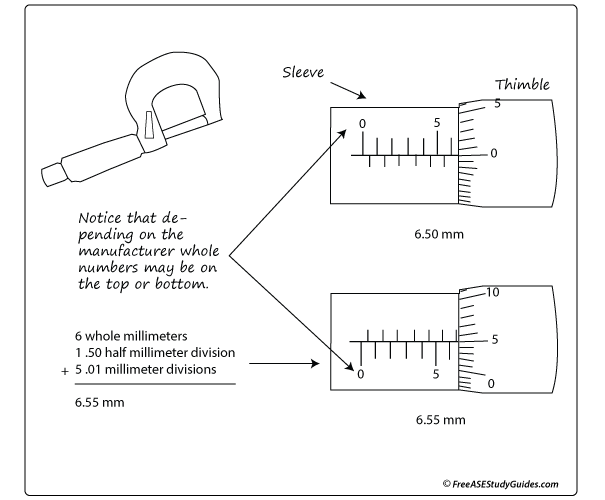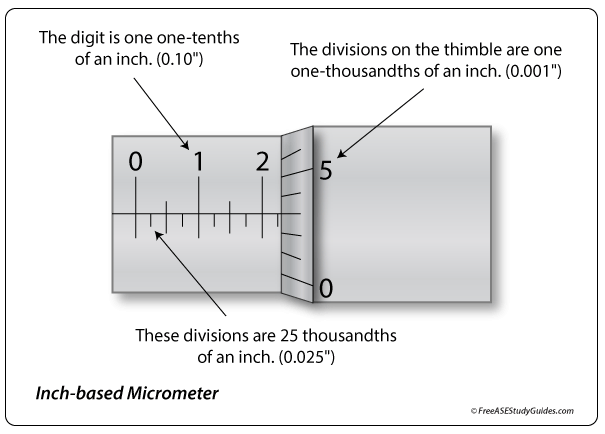Reading a Metric Micrometer

Reading a metric micrometer is similar to an imperial micrometer. There are markings on the sleeve and thimble. The sleeve of a metric micrometer has markings on the top and the bottom. The whole number increments are on one side of the sleeve, and the half-millimeter increments are on the other.
Depending on the manufacturer, these .50 mm or half-millimeter increments may be on the top or the bottom. The thimble of the micrometer is in increments of .01 millimeters. There are 50 divisions of .01mm on the thimble of a metric micrometer.

The micrometer on top reads 6.50mm. There are six whole millimeters on the top and a half-millimeter on the bottom. The thimble in the illustration is at 0. Add the three together to equal 6.50mm.
The micrometer on the bottom reads 6.55mm. Start with the six whole millimeters, which equals 6.0 millimeters. Then add the one .50 millimeter on the other side of the sleeve, which equals 6.50 millimeters. Finally, add the five .01 millimeters on the thimble for a total of 6.55 millimeters.
Metric vs. Imperial Micrometers

There are differences between metric and standard inch-based imperial micrometers. There are markings on the sleeve and also on the thimble of both. The sleeve of a metric micrometer has markings on the top and the bottom. The whole number increments are on one side of the sleeve, and the half-millimeter increments are on the other. There are 50 divisions of .01mm on the thimble of a metric micrometer. The thimble of a standard micrometer has 25 divisions of 0.001 inch. The tool to choose depends on the vehicle and specifications.